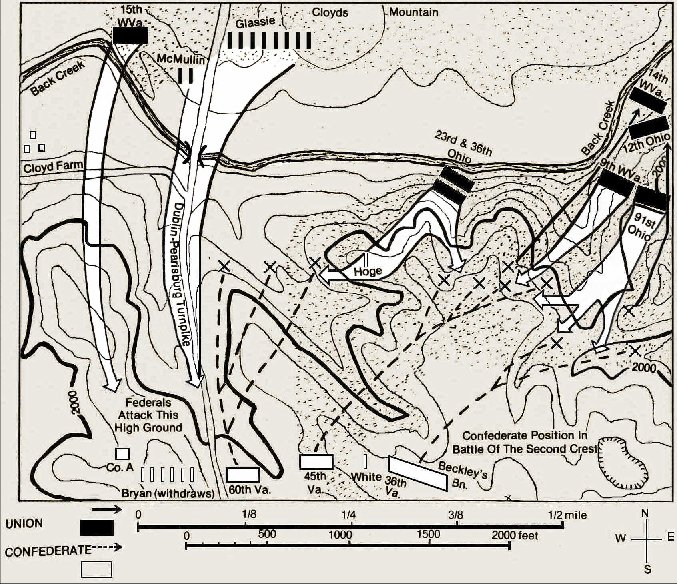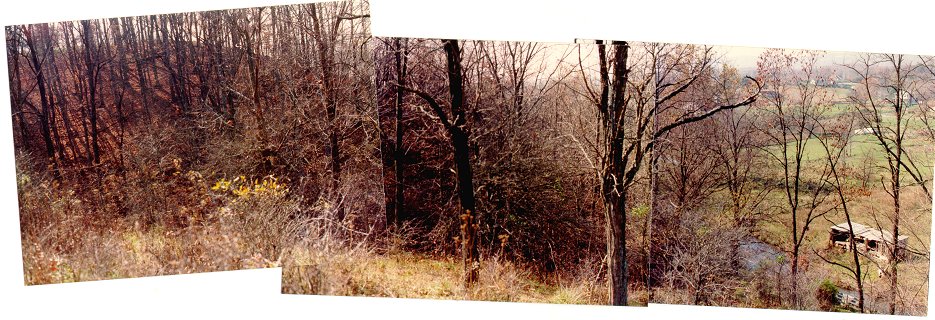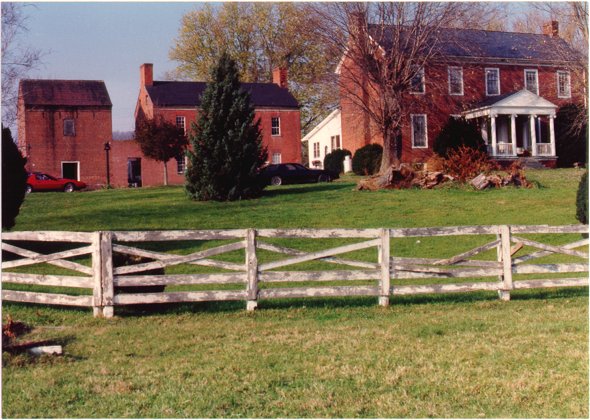
Cloyds Mountain Part 3

Beckley's Battalion
Back on the Confederate right, the 12th Ohio and 14th WVa began to fall back. Beckley's Bn. was positioned near where this picture was taken and toward the right of the picture. These men attacked the retreating Federals in front and flank as the 45th Va. attacked those to their front. It looked like the Confederates would be victorious. The 9th WVa and 91st Ohio in reserve were behind the ridge on the left of the picture. These men allowed their comrades to pass through their ranks, and waited to ambush the Confederate pursuers. When the Confederates were within a few feet, the Yankees opened fire and pursued the Rebels. ( This letter, unavailable when Howard McManus was researching the battle, was e-mailed to me by Dave Waltman of Baltimore, and talks of this phase of the battle. )
Gen. Jenkins was wounded trying to rally his men, and McCausland took command. The 36th Va. had been sent to support the right flank, but since Union troops were now attacking the Confederate artillery on the left, McCausland ordered the 36th Va. to return to its original position, even though it was unlikely to return in time. At the same time, the 45th Va. was nearly surrounded. Possibly because of this error in judgment, the 36th Va. and the artillery reinforcements couldn't stop the Union flank attack and instead got caught up in the confusion. The Confederate position was beginning to deteriorate.


Hayes Attacks
Meanwhile along the Confederate center, the 23rd and 36th Ohio Regiments, which had been pinned down below the ridge, were rallying under future President Rutherford B. Hayes. This photograph shows on the right Back Creek and the field the Federals had charged over. At the bottom of the hill at the creek, the Federals were reforming. On the left of the picture is the top of the ridge the Confederates were defending, specifically a protuberance that part of the 45th Va. had advanced on to enfilade the Pennsylvania Reserves, but the Confederates had since reinforced their right flank with the troops on this protuberance. Hayes led the two Ohio regiments up this hill and into hand to hand combat with the Home Guard troops in the Rebel center. The photo below is from the Home Guard's position.

From Home Guard Position
Hayes's attack, along with the collapsing Confederate right and a Union attack
on the now virtually unprotected artillery on the Confederate left, meant that
the Confederates
had no option other than withdrawal.

Second Crest
The Confederates briefly rallied a little to the rear, on
the
relatively gentle ridge just to the rear of their battle position - the one
McCausland had originally hoped to defend. The
driveway coming off the Turnpike on the left of the picture runs along this
ridge. With just a light line left, on their left the Confederates faced Union cavalry and artillery, which had advanced up the Turnpike.
After about fifteen minutes of fighting, McCausland ordered a retreat.

Cloyd Farm
The battle had lasted for more than an hour, but the Federals
sustained 10% losses, and the Confederates 23%. The 45th Va. suffered
about 40% casualties, while the 60th Va. and 36th Va. lost about 22%. On
the Union side, the
9th WVa. lost 37% and Hayes' 23rd Ohio about 20%. Around 500 wounded
were brought to the Cloyd farm, which was used as a hospital. Smallpox
broke out, and 60 to 75 men were buried nearby. Eventually Gen. Jenkins
was brought to the hospital, and his arm was amputated. Jenkins appeared
to be doing well until an attendant accidentally knocked off his bandage.
Jenkins bled to death.